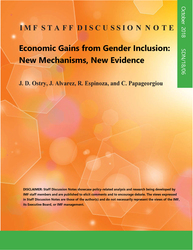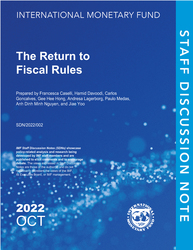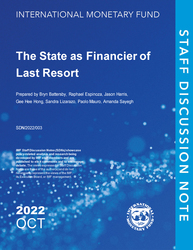
Economic Gains From Gender Inclusion:New Mechanisms, New Evidence
This SDN takes a fresh look at how gender diversity and economic growth are related.
READ MORE...
Volume/Issue:
Volume 2018
Issue 006
Publication date: October 2018
ISBN: 9781484337127
$20.00
Add to Cart by clicking price of the language and format you'd like to purchase
Available Languages and Formats
| English |
Prices in red indicate formats that are not yet available but are forthcoming.
Topics covered in this book
This title contains information about the following subjects.
Click on a subject if you would like to see other titles with the same subjects.
Labor , Economics- Macroeconomics , Gender Studies , SDN , labor force , capital stock , comparative advantage , Gender diversity , female labor force participation , production function , structural transformation , FLFP barrier , labor force participation , male-to-female employment ratio , employment growth , services employment share , Women , Gender inequality , Employment , South Asia , Middle East , North Africa , Central Asia , Sub-Saharan Africa
Summary
While progress has been made in increasing female labor force participation (FLFP) in the last 20 years, large gaps remain. The latest Fund research shows that improving gender diversity can result in larger economic gains than previously thought. Indeed, gender diversity brings benefits all its own. Women bring new skills to the workplace. This may reflect social norms and their impact on upbringing and social interactions, or underlying differences in risk preference and response to incentives for example. As such, there is an economic benefit from diversity, that is from bringing women into the labor force, over and above the benefit resulting from more (male) workers. The study finds that male and female labor are imperfect substitutes in production, and therefore gender differences in the labor force matter. The results also imply that standard models, which ignore such differences, understate the favorable impact of gender inclusion on growth, and misattribute to technology a part of growth that is actually caused by women’s participation. The study further suggests that narrowing gender gaps benefits both men and women, because of a boost to male wages from higher FLFP. The paper also examines the role of women in the process of sectoral reallocation from traditional agriculture to services and the resulting effect on productivity and growth. Because FLFP is relatively high in services, sectoral reallocation along development paths serves to boost gender parity and productivity.
Copyright © 2010 - 2025
Powered by:
AIDC



